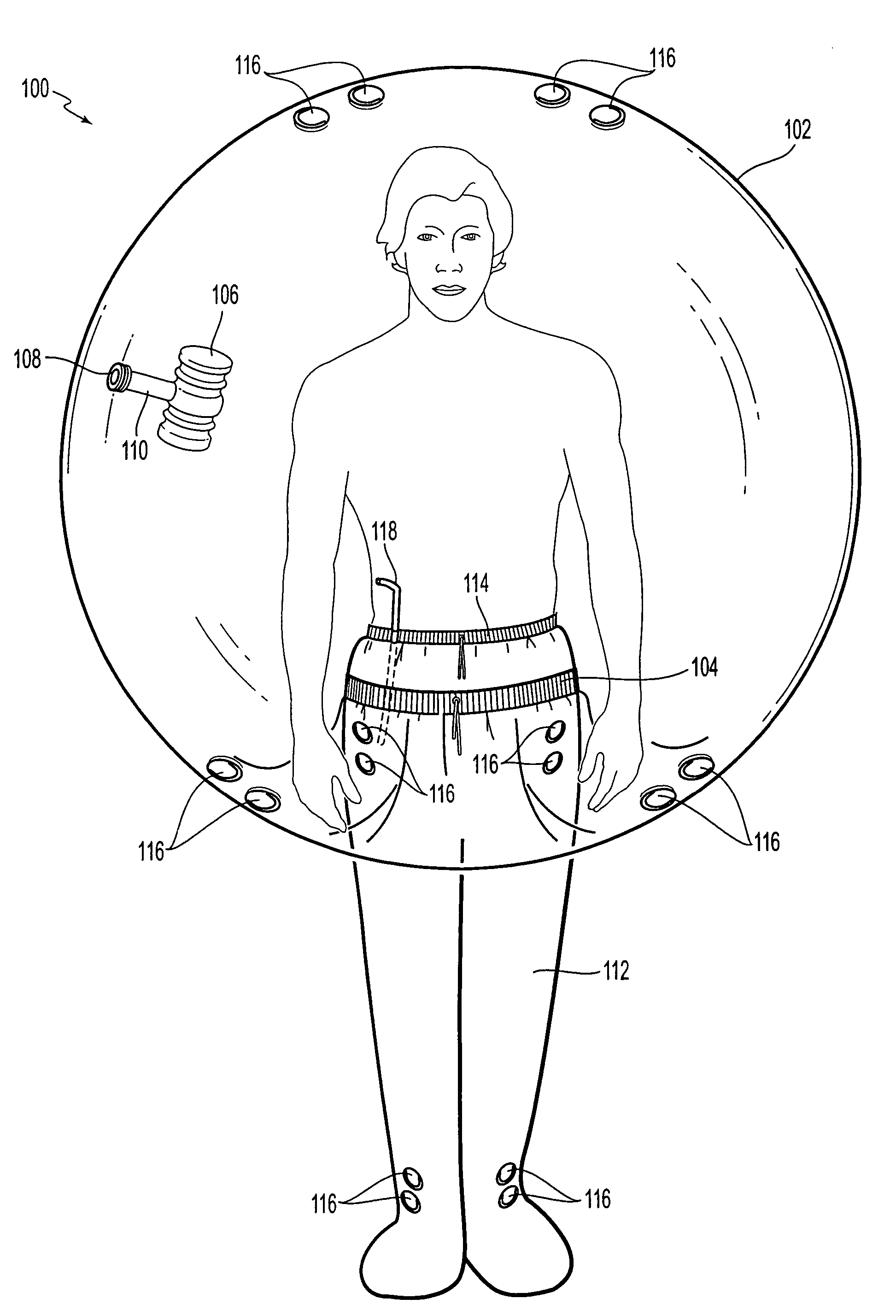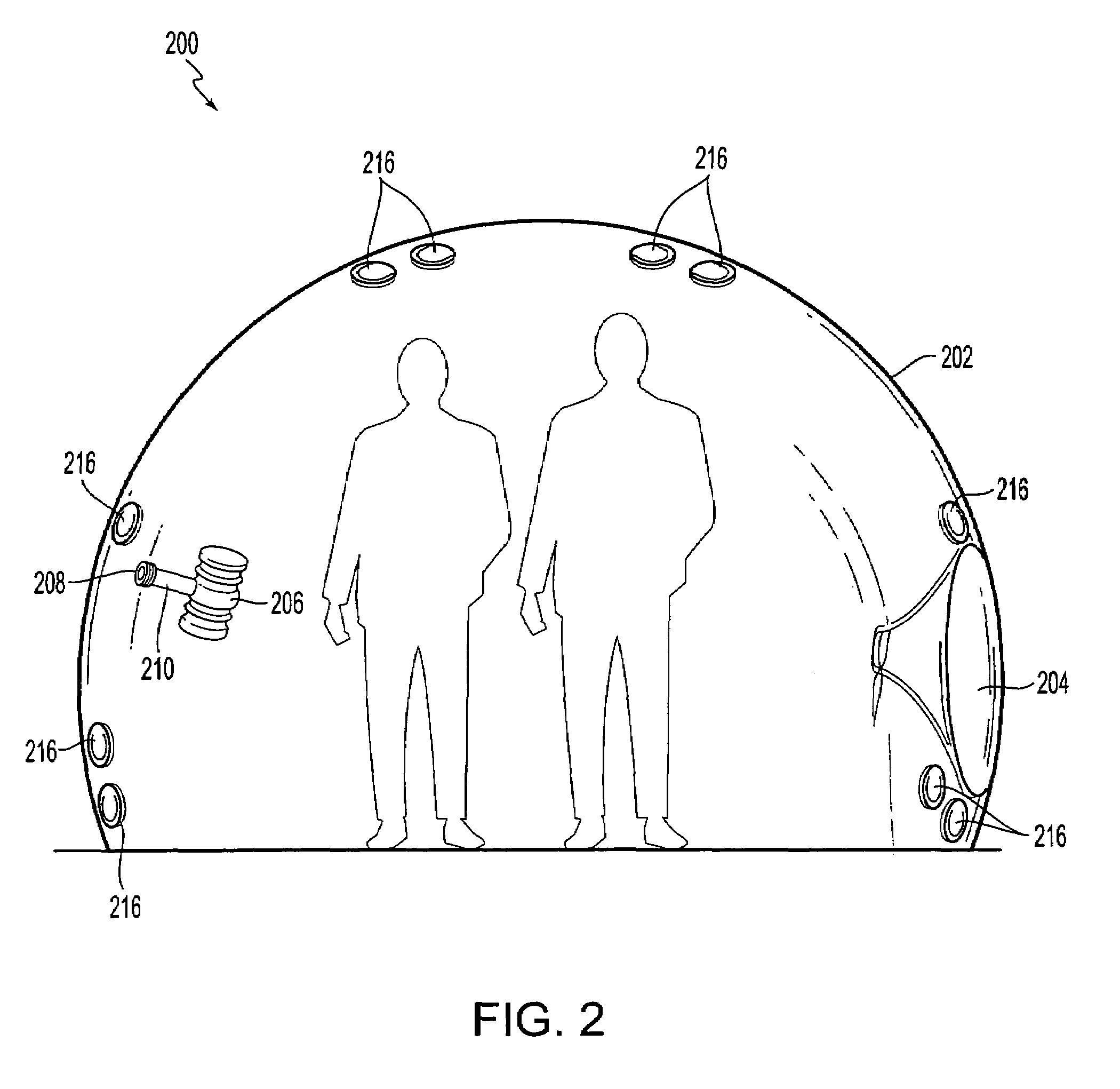Inflatable protective enclosure
a protective enclosure and inflatable technology, applied in the field of emergency enclosures and garments, can solve the problems of heavy structure, risk of contamination, and inability to meet the needs of personnel, and achieve the effect of convenient storage and light weigh
- Summary
- Abstract
- Description
- Claims
- Application Information
AI Technical Summary
Benefits of technology
Problems solved by technology
Method used
Image
Examples
Embodiment Construction
[0029]Exemplary embodiments according to the present invention are described below with reference to the above drawings, in which like reference numerals designate like components.
[0030]FIG. 1 is a perspective view of an exemplary first embodiment of an inflatable, over-pressure protective enclosure 100 designed for use by a single individual. As shown in FIG. 1, the exemplary embodiment includes a water and gas impermeable upper torso membrane 102 that may be draped over an individual's upper torso and cinched tight at the waist by use of a draw string, or elastic band, 104. Alternatively, the membrane may be a large bag-like container with an opening through which the individual climbs, as described below with respect to FIG. 2. A resealable structure allows the individual to close and seal the opening.
[0031]An individual, or occupant, within protective enclosure 100 may inflate the structure with purified / filtered air via a manual / electric pump, or bellows, 106. Pump 106 may be a...
PUM
 Login to View More
Login to View More Abstract
Description
Claims
Application Information
 Login to View More
Login to View More - R&D
- Intellectual Property
- Life Sciences
- Materials
- Tech Scout
- Unparalleled Data Quality
- Higher Quality Content
- 60% Fewer Hallucinations
Browse by: Latest US Patents, China's latest patents, Technical Efficacy Thesaurus, Application Domain, Technology Topic, Popular Technical Reports.
© 2025 PatSnap. All rights reserved.Legal|Privacy policy|Modern Slavery Act Transparency Statement|Sitemap|About US| Contact US: help@patsnap.com



